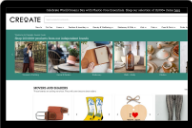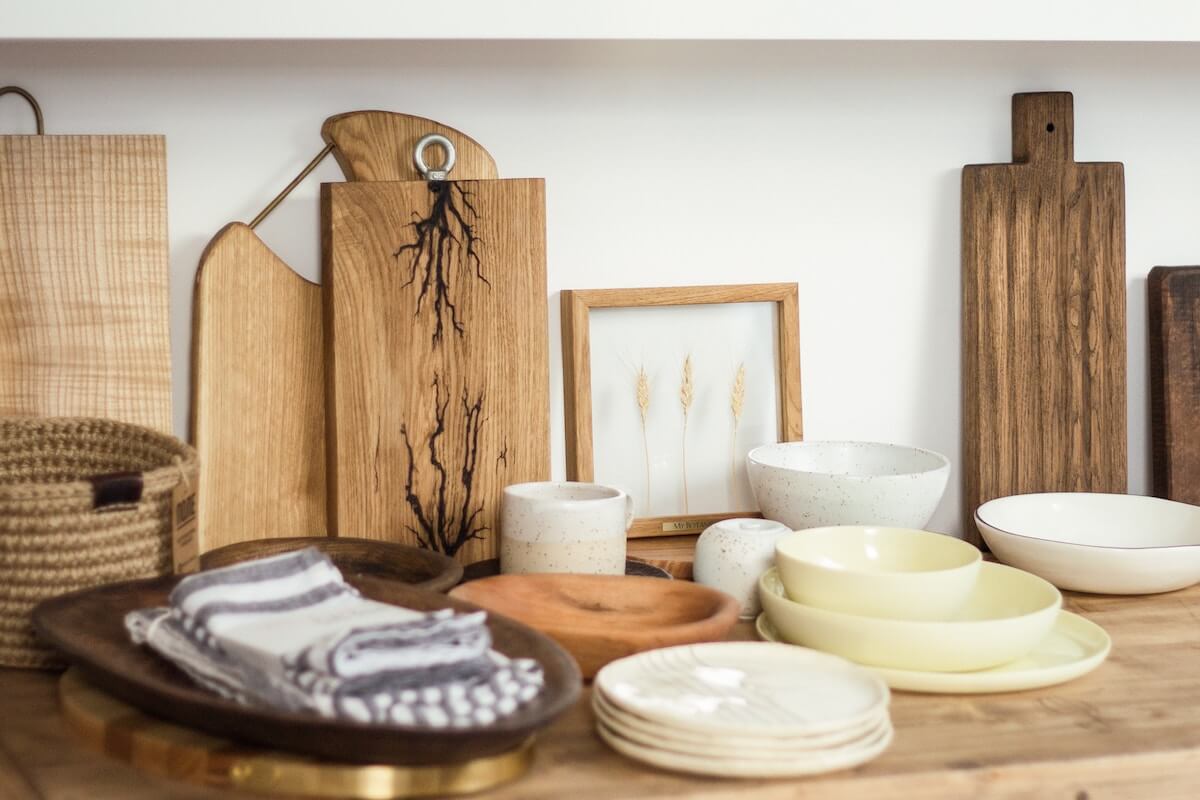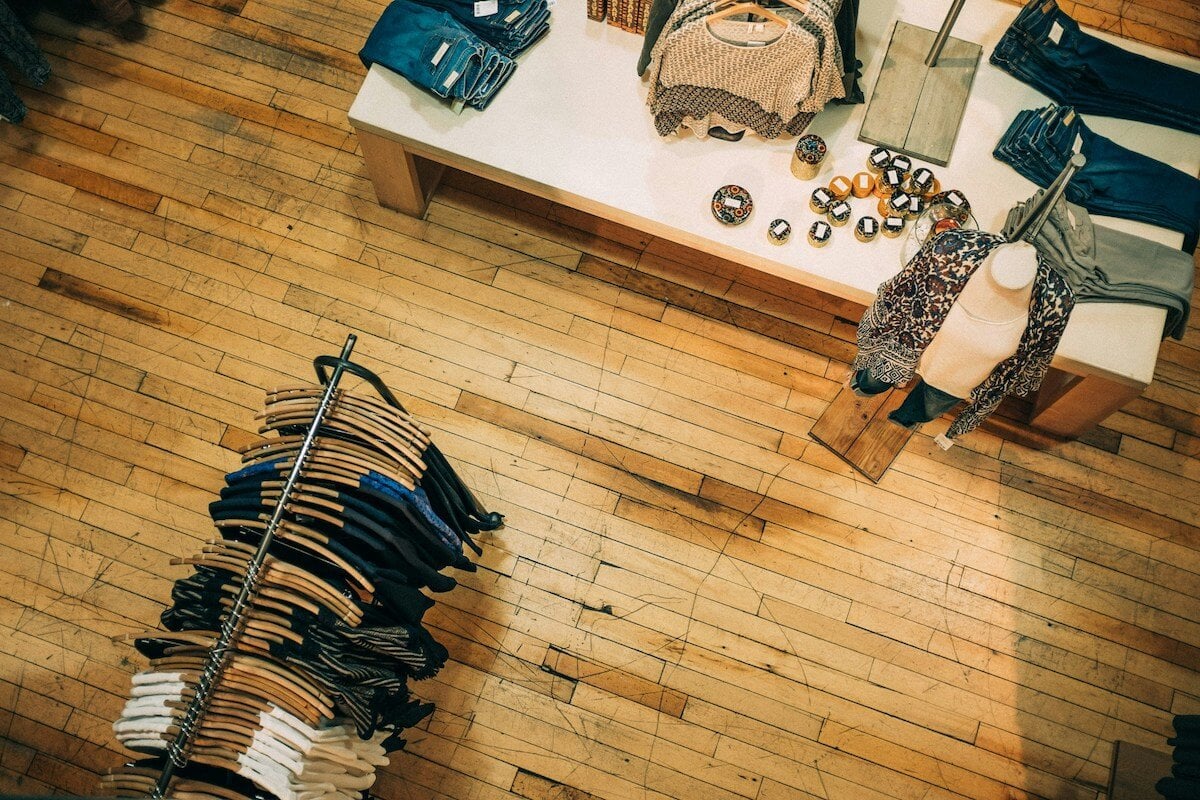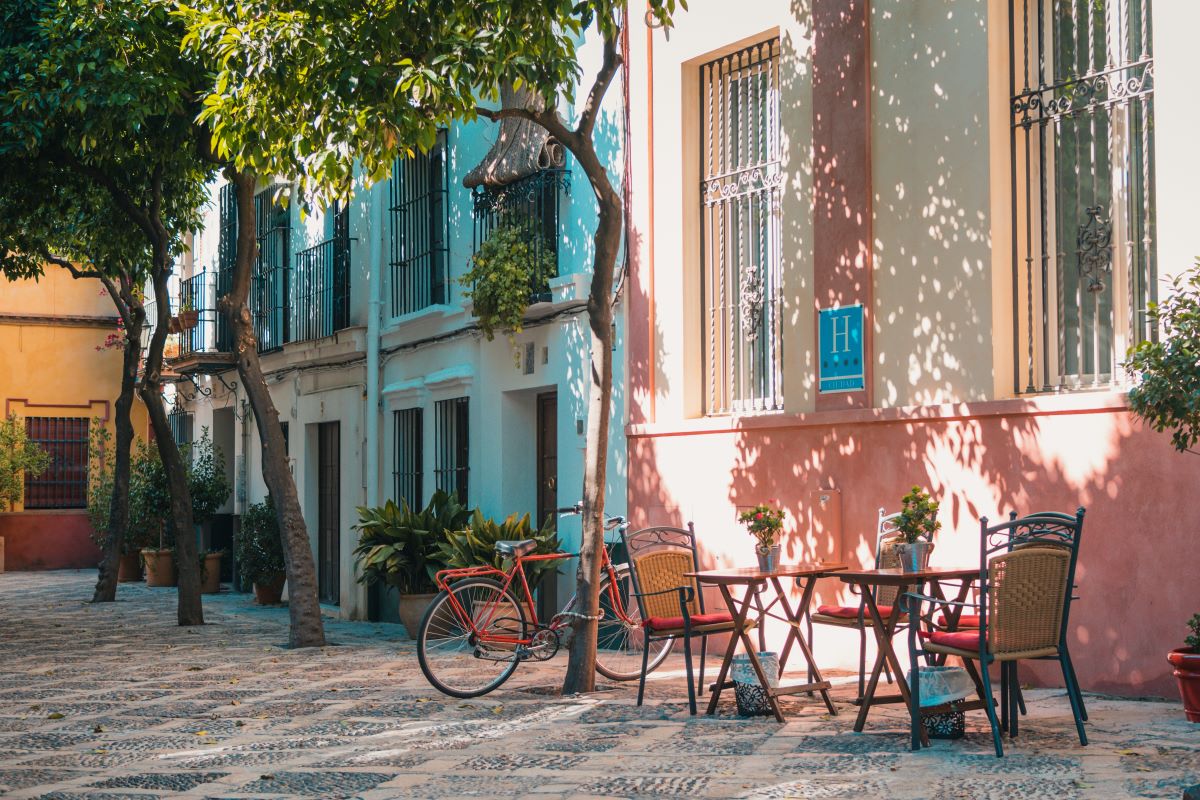
Selling wholesale through CREOATE gets your products in front of thousands of stockists around the globe.
If you're wondering where exactly you can sell to, how it all works, and what information you need to have in order, stick with us -- this guide will tell you everything you need to know.
How much are retailers shopping across borders?
But first, rest assured; there’s an appetite from independent retailers for interesting products from other countries, and here are the numbers to prove it:
- We’ve processed over 10,000 international transactions
- Our cross-border sales are growing 3x every year
- Over 2,000 sellers already sell internationally (around 30% of total sellers)
- Cross-border sales now form 35% of CREOATE's orders
How shipping internationally works: VAT & DDP
We’re here to make sure that the paperwork, cost, and general faff of shipping across borders doesn’t hold small businesses back. Which is why we take care of the tricky bits for you.
When goods are imported across borders, rather than paying the taxes in your home country (for example 20% VAT in the UK), the goods will be taxed at the importing country rate.
There may also be additional duties on items such as wine, which vary by product.
CREOATE calculates these estimated shipping costs, adds them to the customer’s order at checkout, and pre-pays these to customs directly with the carrier, which means customers do not have to interact with customs authorities directly (and neither do you).
This is what the term DDP stands for — it means that the items are ‘Delivered Duties Paid’.
When goods are not shipped DDP, customers are surprised with a bill later down the line, and may have to pay more or wait longer for their goods. DDP shipping is a simpler option all round.
Which countries does CREOATE operate in?
Looking to broaden your brand’s horizons?
Here’s where we currently ship to (pale pink), and where we’re going to open up next (orange and green).
Where can your brand sell to?
Here’s where your brand can receive orders from, depending on where you’re based:
|
Where your brand is based |
Where you can sell to |
|
UK |
UK, USA, EU (all) |
|
Ireland |
UK, Belgium, France, Germany, Luxembourg |
|
USA |
UK, USA, EU (select countries) |
|
Other EU countries |
Your own country (+ some others depending on where you’re based) |
📋 Find out more: Where is CREOATE available? Shipping lanes explained
What you need to check before selling into new countries
We’ll take care of getting your products to the destination country. But it’s your responsibility to check that they meet the criteria of any country you’re selling to.
Different countries have different requirements and restrictions around things like:
- Packaging
- Labelling
- Documentation
- Ingredients
It’s something you’ll particularly notice if you sell food, drink, or beauty products.
💡 Top tip: Not sure if your products meet the requirements for a certain country? No problem — you can restrict that country within your CREOATE dashboard until you’ve had time to do the research. Just go to ‘Country Restrictions’ within your dashboard and tick the box of any country you’re not ready to sell into. Don’t forget to hit save when you’re done.
New to selling internationally? Start with just one market. If you're not sure where to start, check where you’ve had engagement on your other channels (such as social media), your marketing database, or even customers that have previously reached out to buy your products, but which you had to turn down since you were unsure how to fulfil them.
How to optimise your store for selling across borders
Besides checking international regulations specific to your products, there are a few key pieces of information you need to have ready if you want to ship your products across borders.
Having all the right information is in place is essential for ensuring your retailers are never paying more in taxes and duties than they actually need to, and — crucially — you’re not causing them any unnecessary holdups.
Find your Harmonized System (HS) codes
A Harmonized System (HS) code is a six-digit code, administered by the World Customs Organization (WCO) that helps customs identify products quickly, allowing for a smooth tracking of trade and taxation.
This six-digit code serves as a universal language between countries, ensuring accurate product classification and easy international shipping. It can be used throughout different countries to ensure that each customs department knows exactly what’s coming in, and can tax it accordingly.
HS codes are sectioned into three categories that each include two digits: chapter, heading, and subheadings.
Within each category, the product can be described more specifically:
- The chapter: describes in a very broad sense what the product is, so whether it is a fruit, a ketchup dispenser, coffee etc
- The heading: begins to get more specific about the product type
- The subheading: is what tells you specifically what the item is

An example HS code for a plastic ketchup dispenser. Image source: Bookairfreight
All goods, including food and raw materials, have an HS code to calculate customs duties and collect trade statistics. Over 98% of goods that are traded internationally are going to have an HS code, so getting these sorted across your product catalogue is one of the first steps to getting prepped for cross-border trade.
How to add HS codes to your products on CREOATE
To add an HS code to your product, first go to your product catalogue. Click on the three dots to the right of the product you want to start with, and from here you can either enter an HS code exactly, search for the correct one, or search from ones you’ve used previously.

You can add an HS code for each product within your CREOATE dashboard. Just click on the three dots next to each product
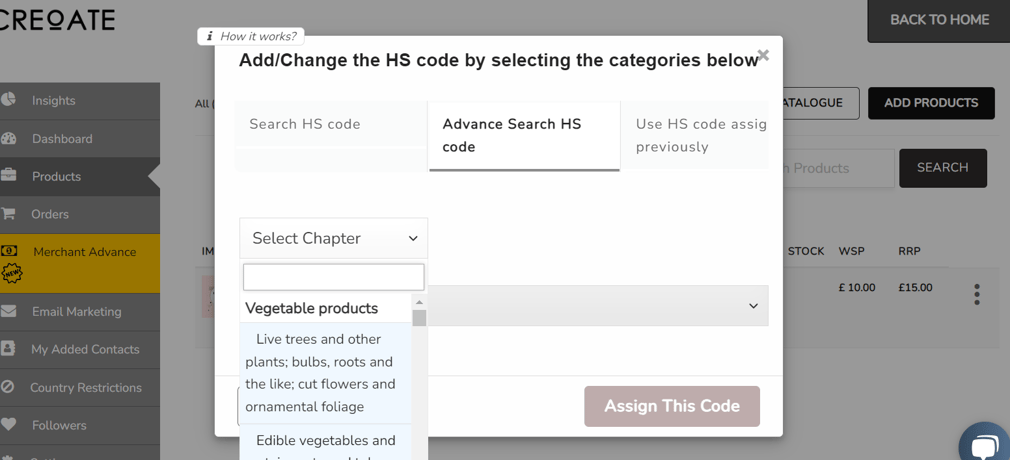
From there, you can add an HS code, search for the right one, or use one you've assigned previously
With the correct code now added, you can be confident that you’re doing everything you can to give your international customers a smooth experience.
Apply for an EORI number
If you’re a business shipping goods into or out of the European Union, chances are you need an Economic Operators Registration and Identification (EORI) number
EORI numbers start with two letters which represent your country, so GB if you’re in Great Britain, followed by between three and seventeen digits. Your EORI number is completely unique to your brand, and it’s free and easy to apply for from your government site.
How to add your EORI number to CREOATE
To add your EORI number to your CREOATE account, go into your dashboard > Settings > Store Settings. Scroll right down to the bottom where there’s space to input your EORI number.
How to encourage more international orders
Once your store is set up to sell overseas, what can you do to encourage more international orders?
1. Fulfil within your lead time (& make this as competitive as possible)
As with selling generally, the more orders you can fill more quickly, the better your chances of landing more international customers.
Packages arriving from overseas generally take longer to arrive than those being shipped domestically; it’s largely unavoidable. But how quickly you can prep and pack an order is within your control, and keeping this time as low as possible is going to keep you as competitive as possible when compared to more local brands.
And shipping quickly also just feeds into being a good seller generally, which is something we (and our algorithm) would always encourage, regardless of where your orders are coming from.
2. Spread the word
And as always, there’s plenty you can do to drive more orders from your store too; whether from local retailers, or those further afield. Sharing your referral link on social media, linking back to CREOATE from your own website… it all helps you get more eyes on your store, and to move your brand up the rankings.
Wrapping up
Let’s get you going global. Selling cross-border takes some upfront effort to get the essentials in place, and to check your products meet the criteria of the countries you’re selling into. But once you’re over that initial hurdle, the world really is your oyster; with all the shipping and taxes taken care of for you, you can sit back, pack up orders, and enjoy the feeling of calling yourself a ‘global brand’. You’ve got this 😎


